 There are many muscles that are responsible for the movements in the hand. To be exact, there are a total of 34 muscles that move the palm, fingers, and thumb. Our fingers actually do not have any muscles inside; their movement comes from the tendons of all the muscles in the palm and forearm. Nine individual muscles control the thumb alone! Many children naturally develop adequate strength in all of these muscles to learn the fine motor skills needed to manipulate toys, dress themselves, and use a pencil and scissors. There are some children however, that do not acquire this strength as easily and need extra attention to gain that necessary strength.
There are many muscles that are responsible for the movements in the hand. To be exact, there are a total of 34 muscles that move the palm, fingers, and thumb. Our fingers actually do not have any muscles inside; their movement comes from the tendons of all the muscles in the palm and forearm. Nine individual muscles control the thumb alone! Many children naturally develop adequate strength in all of these muscles to learn the fine motor skills needed to manipulate toys, dress themselves, and use a pencil and scissors. There are some children however, that do not acquire this strength as easily and need extra attention to gain that necessary strength.
Here are some activities designed to help children with weak hand muscles and poor fine motor skills.
PLAY-DOH & THERAPUTTY
Play-doh is a great tool. Have your child knead it, roll into logs or small balls with their finger tips, squash it with open palms and use their fingers to mold it into a larger ball. Use cookie cutters too!
1/4 cup salt
1 cup flour
1/4 cup water
Have your child mix the flour and salt in a bowl then add water. Knead and squeeze the dough to make a clay consistency. You may need to add more water.
Theraputty is more resistive than Play-doh; it comes in a variety of resistances ranging from soft to extra firm. Hide small items (buttons, coins, beads, etc) inside and have the child pull it apart with their hands and fingers to locate the items. Roll the theraputty into a log and have your child snip it with scissors. This activity can be graded by changing the thickness of the log or using varied levels of resistive putty; adapt according to your child’s abilities.
PINCHING ACTIVITIES
Tongs, tweezers, chopsticks, and clothespin activities use muscles for pinch strength in the hands and subsequently for the muscles used in holding writing tools properly. Always make sure a neutral wrist position and proper pinch grasp are used to maximize strengthening of hand and finger muscles. There are a variety of toys with tongs that can be purchased such as Wok and Roll and the Hungry Dog Motor Skills Game. There are also creative ways to come up with home-made activities such as the two described below.
Label clothespins A to Z and work on spelling words. Clip them onto fabric or a “clothes line” hung slightly above shoulder height of child to incorporate wrist and shoulder muscles in this activity.
Use metal tongs or strawberry pickers to transfer marbles placed on the suction cups of upside down bathtub treads into a narrow mouthed bottle or container.
When children crawl as infants the arches within the palm of the hand develop and strengthen. These are the muscles that allow us to cup a dice and shake it within our hand. Great activities to try with your child to develop and strengthen these arches are crawling on all fours through a tunnel or over uneven surfaces like couch cushions, propelling themselves in a prone position (laying on stomach) on a scooter board, and wheelbarrow walking.
SQUEEZING ACTIVITIES
Squeezing activities may include use of a stress balls, large chip bag clips, crumbling large pieces of paper to make snowballs and have a friendly snowball fight! Incorporate spray bottles and water squirt bottles to create chores for your child to clean the table after a meal and water plants. There are a few hand grasp toys (see image below) that children love that can be used to pick up trash or toys during clean up time!
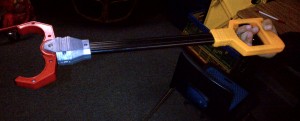
Remember, stronger hands will lead to more independence in self-help tasks like opening food wrappers and manipulating clothing fasteners. Strong hands and fingers will allow your child to play with a variety of toys and fun games that require the use of good fine motor skills. Lastly, good strength in hands and fingers will give your child the foundation to correctly hold a pencil and manipulate scissors with precision.
– Sari Ockner, OTR/L
Like Kidz Occupational Therapy on Facebook Follow on Twitter @Sari_KidzOT
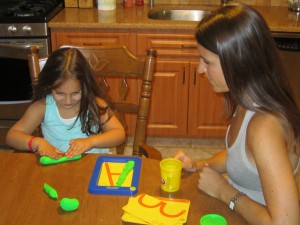
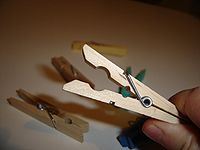
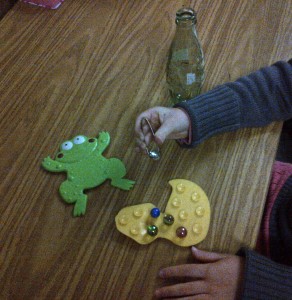
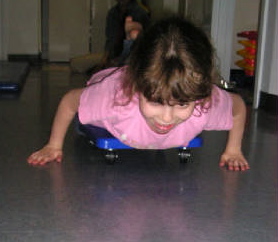




Leave a Reply